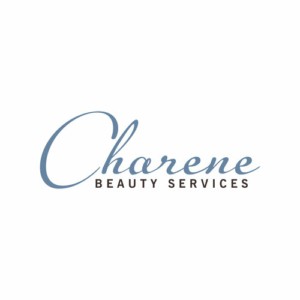Cleansing Facial Wipes For When You Are In A Rush – Which For Each Skin Type by Charene Beauty Salon
OK, OK, so the research is out, and we know that rubbing an anti-aging cleanser into your face for a full minute is the best (full article). However, though it’s just 60 seconds, sometimes even that feels too much for us mere mortals, and hence God (and some really smart chemists) created cleansing wipes. I’m a huge fan of these, though I must say they will not perform any miracles for your skin – they just cleanse and let you get on with the rest of your day. Here are the best cleansing wipes I’ve found by skin type:
Best for Dry Skin: Olivella Facial Cleansing Tissues ($6.99, Amazon.com)
These cleansing wipes are less drying than many other kinds, owing in part to the olive oil. Functioning as an emollient (agent that hydrates by softening the skin), olive oil has also been shown to fight UVA/UVB-induced damage to the skin (Toxicology, 2003). And although olive oil can also cause contact allergy in some individuals (Contact Dermatitis, 2006), the fact that these wipes contain thick ingredients like glycerin means that the olive oil won’t be in contact with your skin for long, decreasing the probability of allergy. Overall, I like these wipes very much, particularly for those with dry skin. Ingredients: Aqua (Water),Glycerin ,Olus,Lauryl Glucoside,Polyglyceryl-2 Dipolyhydroxystearate, Phenoxyethanol, Disodium Cocoamphodiacetate, Fragranza,Olea Europaea (Olive) Fruit Oil, Polyaminopropyl Biguanide, Glyceryl Oleate, Dicaprylyl Carbonate, Benzoic Acid, Panthenol, Cocoglycerides, Dehydroacetic Acid, Sodium Stearoyl Glutamate,Tocopheryl Acetate, Ethylhexylglycerin, Citrus Medica Limonum (Lemon) Fruit Extract, Centaurea Cyanus Flower Extract, Ginkgo Biloba Leaf Extract, Panax Ginseng Root Extract, Camelia Sinensis Leaf Extract.
Best for Oily or Acne-Prone Skin: Yes to Tomatoes Blemish Clearing Facial Towelettes ($7.99, Target.com)
Are there better solutions for acne? Sure. But we’re talking wipes and on-the-go solutions, and with that, it’s hard to beat Yes to Tomatoes Blemish Clearing Facial Towelettes. First off, there is 1% salicyclic acid, an antibacterial agent that inhibits the production of various components of bacteria necessary for binary fission (bacterial reproduction), stopping acne growth and proliferation (Journal of Clinical Investigation, 2003). Salicyclic acid also is believed to soften keratin, a protein within the skin, which helps to increase cell turnover. Next, there is witch hazel, which has been shown in Archives of Dermatology (amongst other sources) to decrease inflammation. Lastly, there is alcohol, which I used to not like in skin care products, but have since learned helps to a.) thin the solution, and b.) help skin care ingredients be better absorbed by the skin. As a result, Yes to Tomatoes Blemish Clearing Facial Towelettes is my favorite set of wipes for oily/acne-prone skin as of July 2012. 🙂 I also must disclose that the company sent me a set for review, but I promise you, that did not influence my decision consciously at all! Salicylic Acid 1%, Water (Aqua), Glycerin, Betaine, Solanum Lycopersicum (Tomato) Fruit Extract*, Aspalathus Linearis (Rooibos) Leaf Extract, Polyglyceryl-4 Caprate, Caprylyl/Capryl Glucoside, Sodium Benzoate, Hamamelis Virginiana (Witch Hazel) Extract, Alcohol, Citrullus Vulgaris (Watermelon) Fruit Extract, Capsicum Frutescens (Red Pepper) Fruit Extract, Potassium Sorbate, Sodium Hydroxide, Galactoarabinan, Phenoxyethanol, Parfum
Best for Normal Skin: Neutrogena Night Calming Towelettes ($6.49, Amazon.com)
There’s nothing special about Neutrogena Night Calming Towelettes – except, of course, one thing: They work. They remove makeup easily, and leave your skin feeling clean -without any residue. The secret here is that like dissolves like: water helps to dissolve water, whereas an ester and fatty acid (palmitate)-rich base dissolve oil-based make-up easily. Add in a few silicones for a smooth finish, and voila! You’ve got a clean, smooth face in seconds. I admittedly used these all the time in med school – I kept them on my nightstand with a bottle of retinol cream. A quick swipe of one of these, a few pumps of retinol, and I was off to dreamland! Water, Cetyl Ethylhexanoate, Isostearyl Palmitate, Pentaerythrityl Tetraethylhexanoate, Isononyl Isononanoate, Cyclopentasiloxane, Hexylene Glycol, Cyclohexasiloxane, PEG 4 Laurate, PEG 6 Caprylic/Capric Glycerides, Sucrose Cocoate, Carbomer, Sodium Hydroxide, Benzoic Acid, Dehydroacetate Acid, Phenoxyethanol, Iodopropynyl Butylcarbamate, Fragrance (Parfum)













